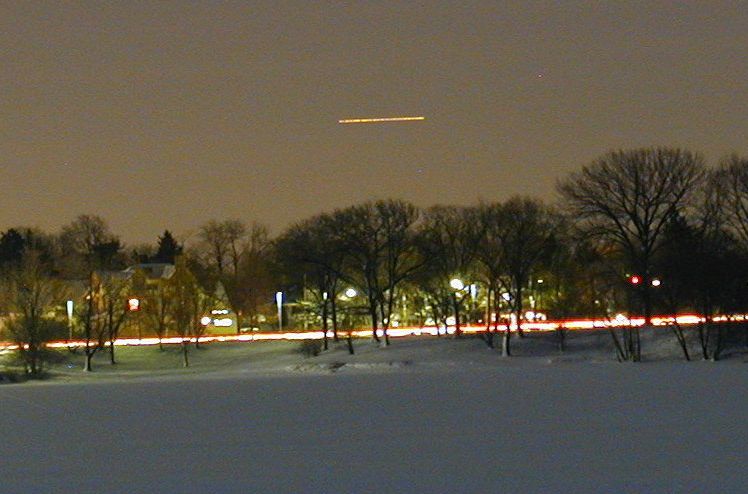
With the possible exception of a single HST servicing mission, the Space Shuttle is now entirely dedicated to flights servicing the International Space Station (ISS). ISS orbits in a specific "orbital plane", which can be roughly visualized as a sheet of paper running through the center of the Earth, and tipped at an angle of 51 degrees from the equator, so that the paper forms a circle touching all lines of latitude between 51N and 51S. This inclined orbit was chosen to allow launches to ISS from both American and Russian launch sites (although the Russian launch site is actually in Kazakhstan).
When the shuttle flies to ISS, the exact position of ISS in its orbit is not terribly important, because it is relatively easy to shift an orbiting shuttle forward or backward in the orbital plane. What matters is the position of the orbital plane itself, because it is quite difficult to change planes in space. Therefore, the Shuttle is launched at the exact time when the Earth's rotation brings Cape Canaveral through the imaginary sheet of paper that defines the ISS orbital plane. This creates a very short launch window.
The shuttle's launch trajectory follows the path defined by that imaginary sheet of paper, tipped 51 degrees to the equator. This path takes the shuttle northeast along the East Coast of the United States. (Technically, there is a second launch opportunity each day to the southeast, but that trajectory cannot be used because the launch trajectory would take the shuttle over populated regions of the Caribbean during the launch process.)
When the shuttle launches at night, the launch is actually visible throughout the Atlantic coastline. Main engine cutoff, eight minutes after launch, happens off the New England shoreline. For example, here is a time-lapse launch photo taken from Boston during mission STS-98, looking across Jamaica Pond seven minutes after liftoff from Florida:

The best views of a launch, of course, are from Cape Canaveral. During assignments there as a reporter, I used an unmanned camera near the launch pad (set up the day before launch) to take liftoff shots.

